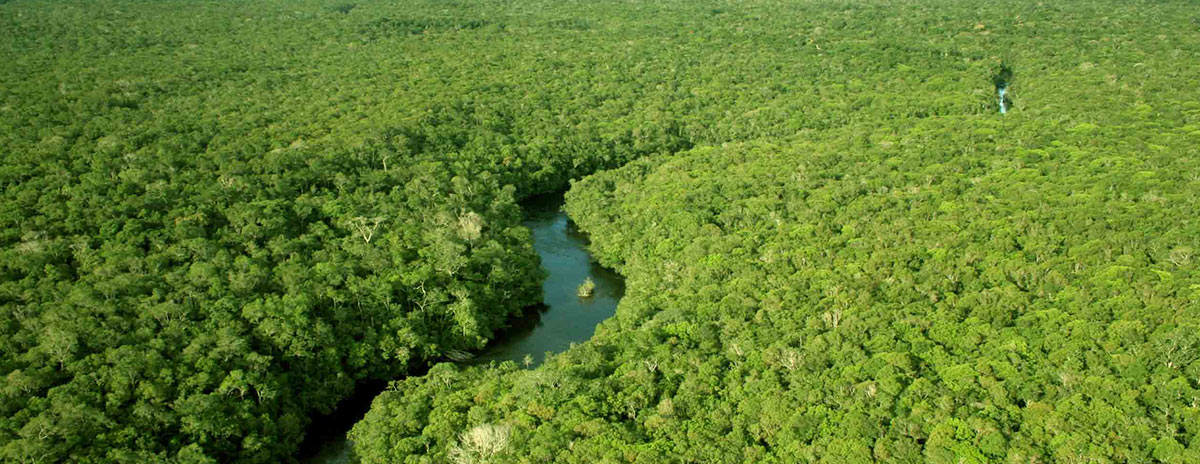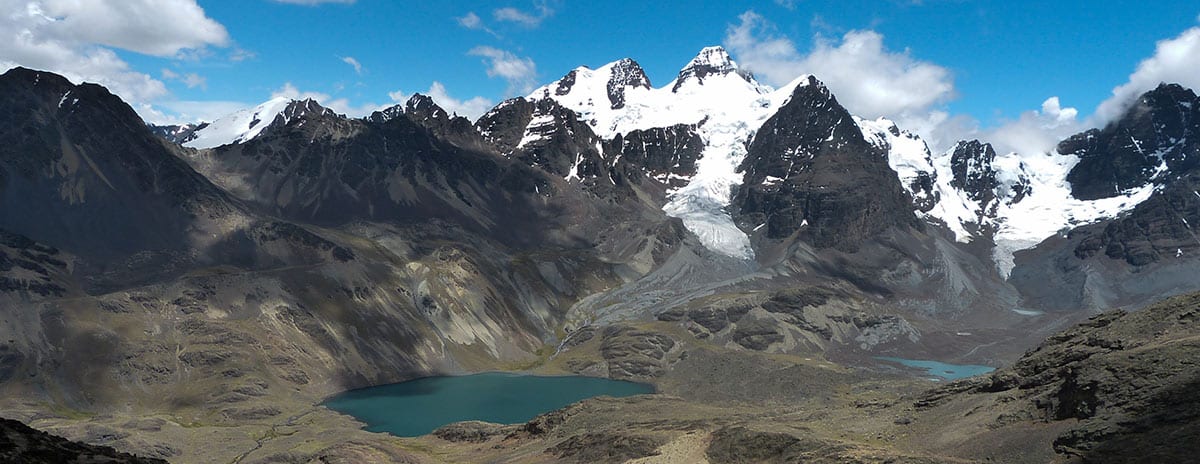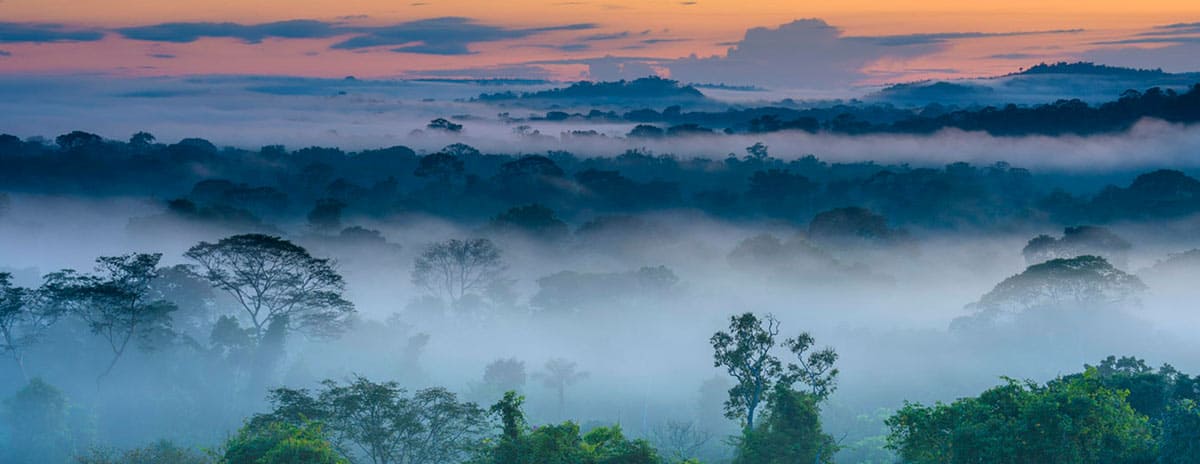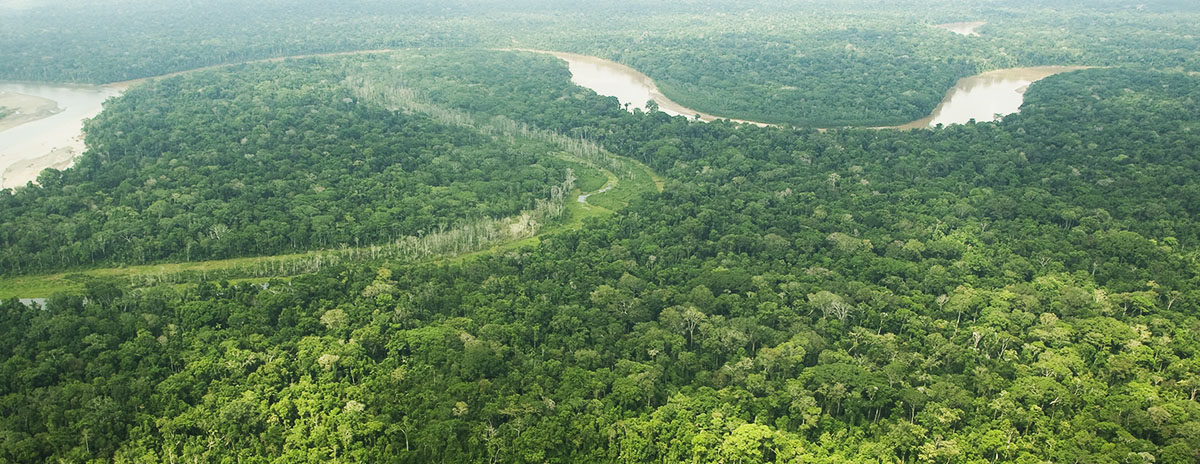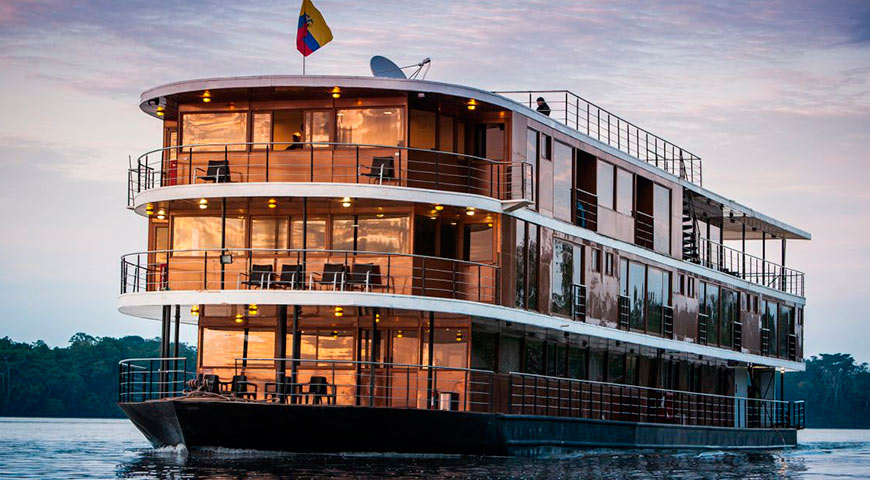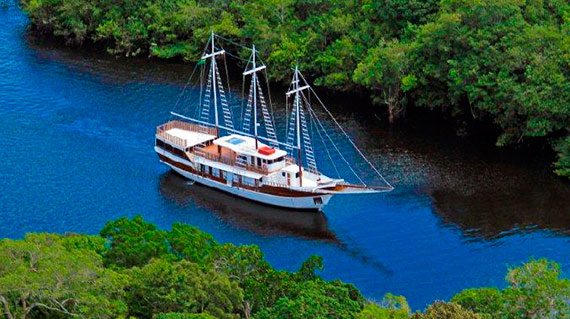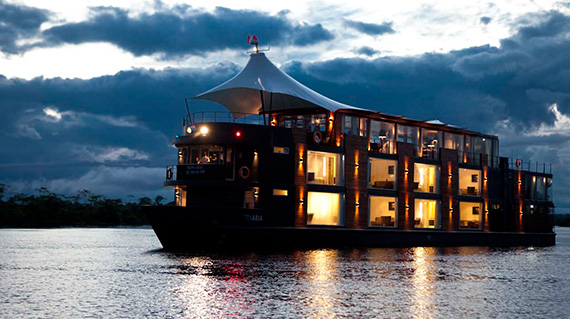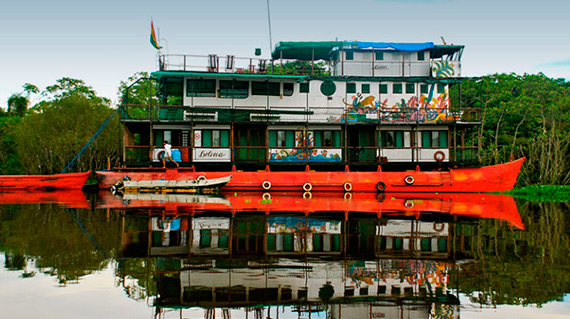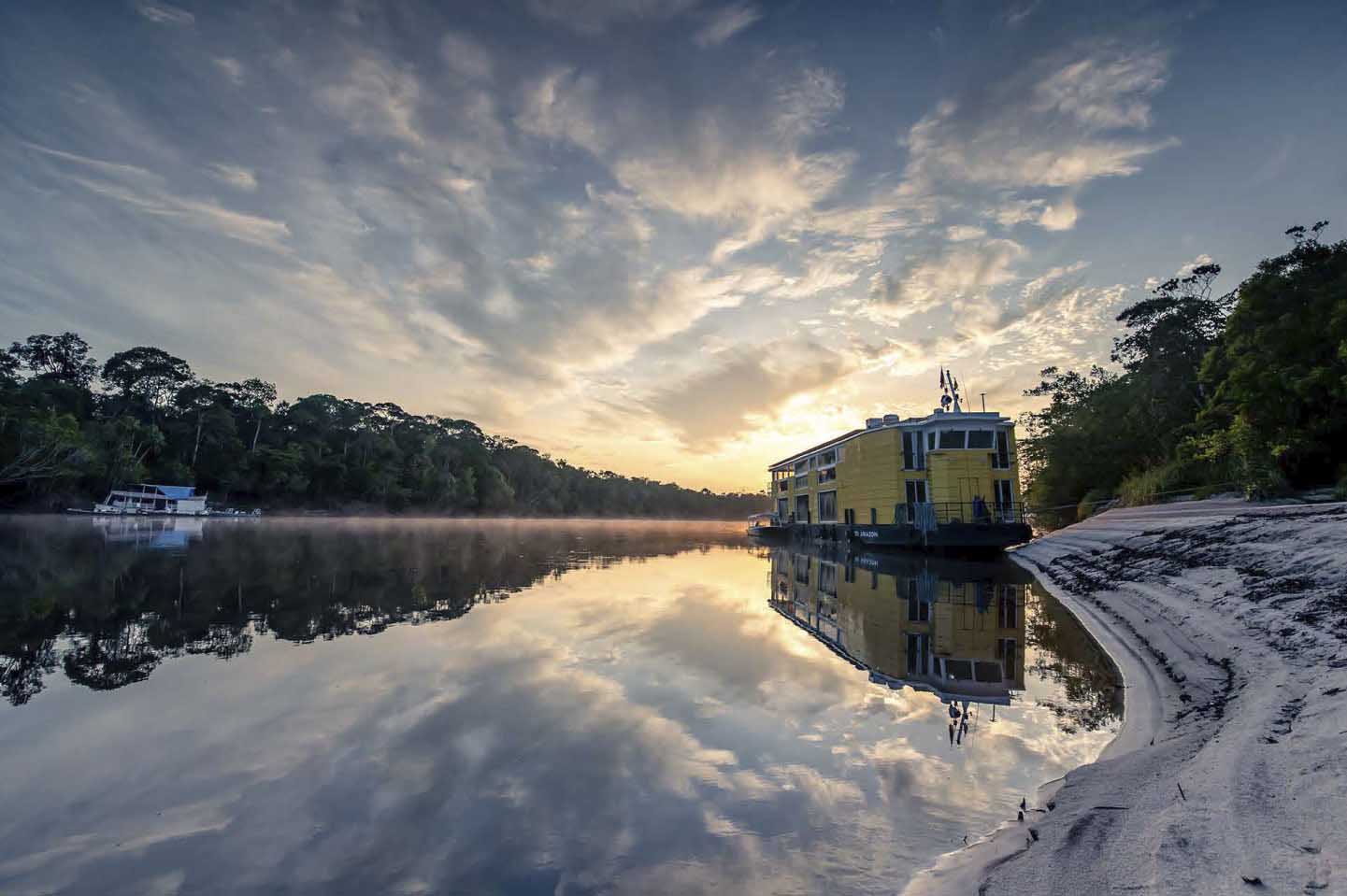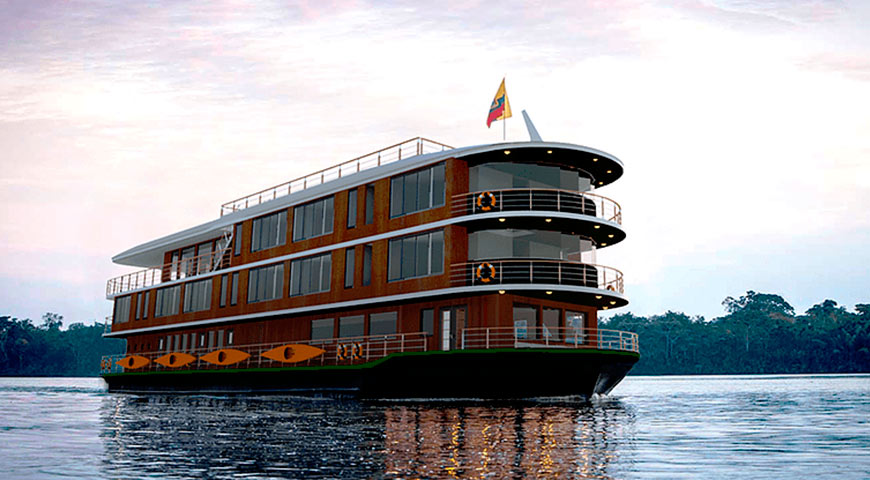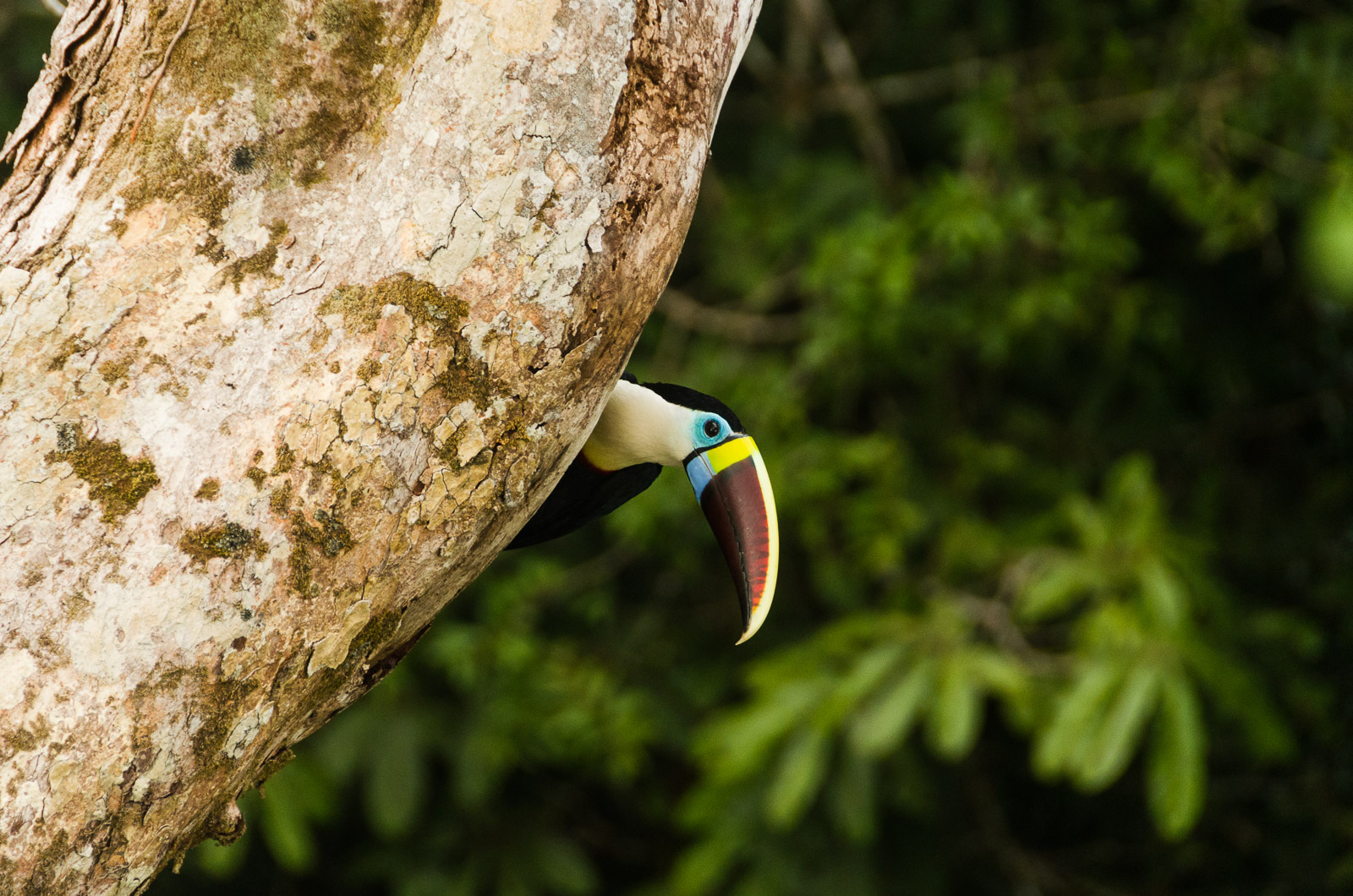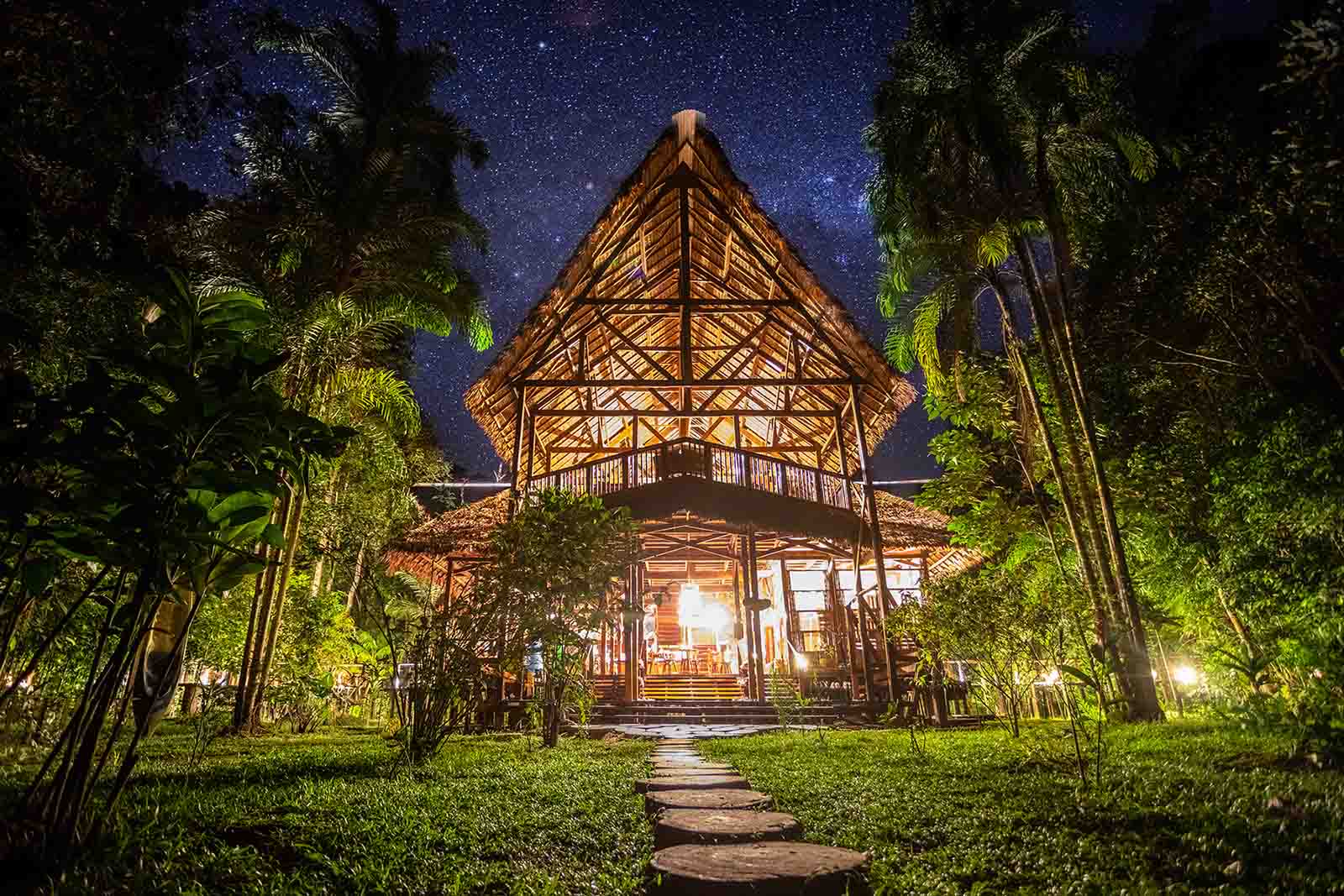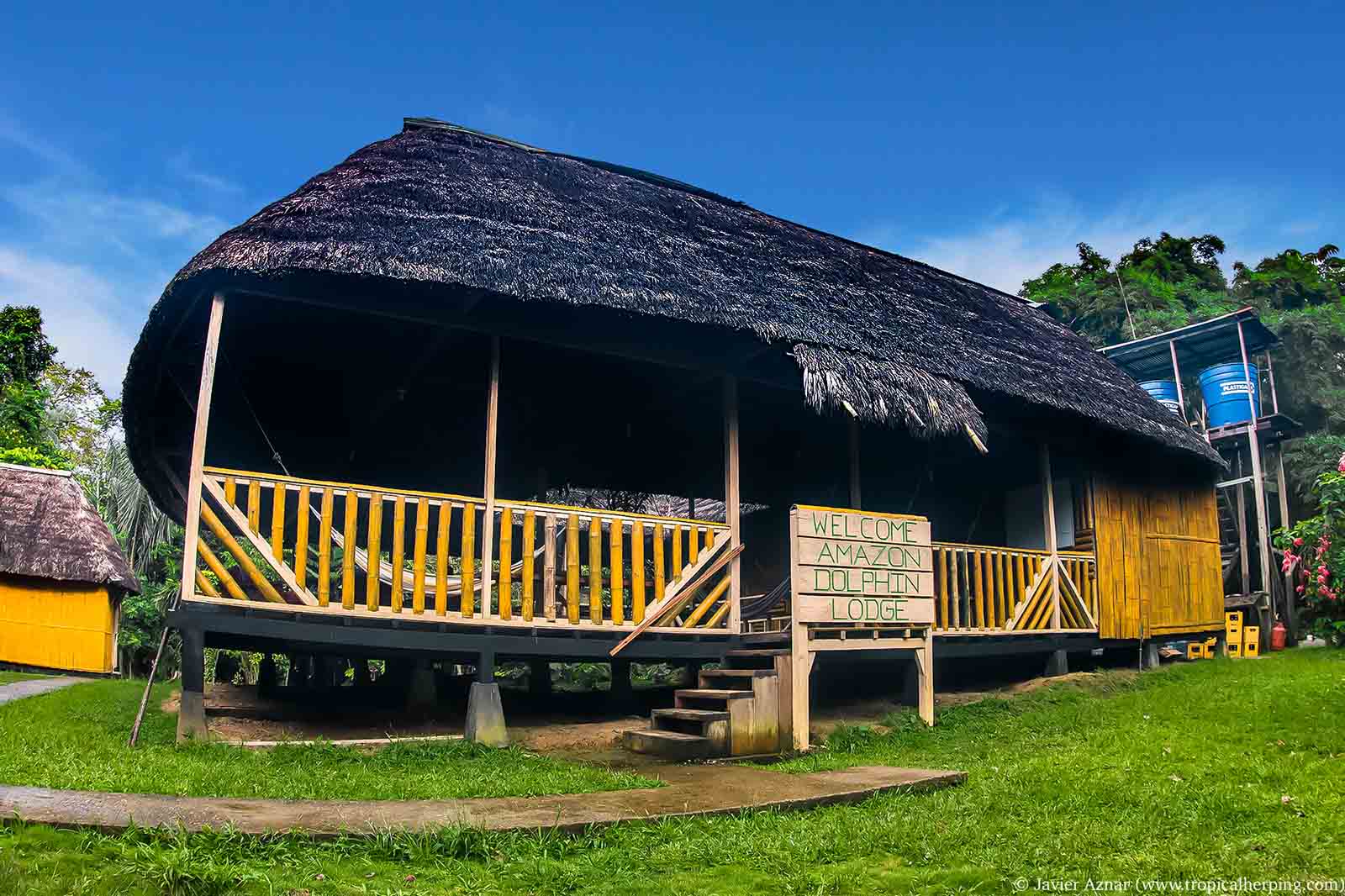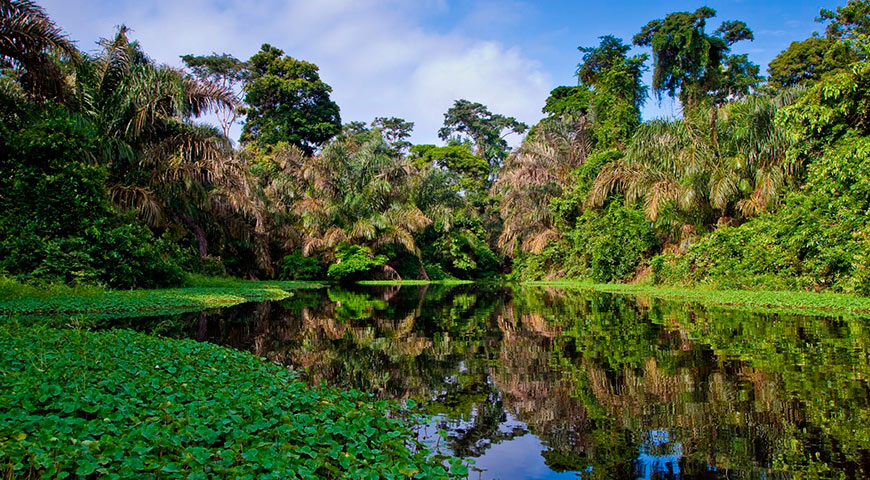
Contact Us
Amazon River Wonders: Your Ultimate Travel Guide
Let’s cut right to the chase. The Amazon River isn’t just another stream; it’s a lifeline pulsing through South America. It begins in the Peruvian Andes, snakes its way across nations, and pours into the Atlantic with a force only nature could muster.
Dive deep with us as we explore this colossal waterway. You’ll learn about its journey from birth to ocean, countries it touches, and ecosystems it supports.
Get ready for an adventure that includes river cruises to biodiversity hotspots – all while you understand the global impact of the river, the forest and the water that flows through it.
Trips that visit the Amazon river
Table of content
- The Amazon River: A Natural Wonder
- The Birth and Journey of the Amazon River
- From Mountain Springs to Oceanic Might
- Navigating Borders Like a Pro
- Majestic Delta: A Watery Finale Worth Waiting For
- Countries Encompassed by the Amazon River Basin
- Diverse Ecosystems Within the Amazon Basin
- Flooded Forests: The Varzea and Igapo
- Terra Firme: The Unflooded Heartland
- Vast Wetlands: More than Just Swamps
- The Lush Life Along the Amazon: Flora and Fauna
- Amazonian Wildlife: A Parade of Biodiversity
- Botanical Bounty: Plants That Sustain and Amaze
- Symbiotic Relationships: Nature’s Intricate Web
- Tributaries and Affluents Feeding the Mighty Amazon
- Embarking on an Amazonian Adventure: River Cruising Essentials
- Main Routes to Navigate Your Imagination
- Vital Ports That Anchor Your Journey
- Navigating Choices: Selecting Your Vessel Wisely
- Highlights and Must-Sees on an Amazon River Trip
- Vibrant Wildlife Encounters
- Cultural Immersion with Indigenous Communities
- River Cruising: Choose Your Style
- Comparing Travel Styles in the Amazon Region
- River Cruises: Gliding Through Nature’s Arteries
- Lodge Stays: Immerse Yourself Fully
- Making Your Choice
- The Amazon’s Global Impact
The Amazon River: A Natural Wonder
Imagine a waterway so vast it seems to hold the secrets of the earth within its depths. The Amazon River, stretches across South America with such might and majesty that it commands awe and respect. It’s not just another river; it’s a lifeline for the world’s largest rainforest and an ecological treasure trove.
The Birth and Journey of the Amazon River
The story of the Amazon starts high in the misty peaks of Peru’s Andes Mountains. Here, at these dizzying heights, trickles form from melted snows to begin their long march eastward. As they converge and swell into larger streams—and eventually into one mighty flow—the river becomes a force unto itself. Winding through lush landscapes, past ancient trees whose roots grip tightly to rich soils teeming with life.
By feeding countless tributaries along its path before reaching Brazil’s tropical embrace where it spills grandly into the Atlantic Ocean—the journey is nothing short of epic.
From Mountain Springs to Oceanic Might
The journey starts modestly, with meltwater from glaciers near Mount Misti overlooking the city of Arequipa. This is where our protagonist—a droplet destined for greatness—kicks off an adventure across South America. The water gains volume as it races down through gorges and valleys, collecting contributions from other eager tributaries along the way.
A bit further on, still gathering momentum in Peru, it becomes known as the Apurímac River at first before donning the name ‘Amazonas’ after merging with several larger rivers such as Marañón and Ucayali. Now that’s teamwork.
Navigating Borders Like a Pro
As if seeking fame beyond local borders, this watery behemoth winds through Brazil but also takes brief detours to flirt with Colombia and even Venezuela before committing itself fully to Brazil again. Here’s where things get serious—the river widens so much you might forget you’re looking at fresh water rather than an inland sea.
Majestic Delta: A Watery Finale Worth Waiting For
The final act unfolds when our liquid lead hits Brazilian shores at Belém after meandering about 6,400 km (that’s nearly 4,000 miles). But wait—there’s more. The plot twist involves splitting into hundreds of paths creating an intricate delta before taking a bow by emptying into the Atlantic Ocean.
This isn’t just geography; it’s drama on an ecological scale.
Key Takeaway:
The Amazon River isn’t just massive; it’s a global lifeline that shapes weather patterns and supports rich biodiversity. Its journey from Andean peaks to the Atlantic is an ecological marvel, reminding us of our duty to preserve this natural wonder for future generations.
Countries Encompassed by the Amazon River Basin
Slicing through South America like a green ribbon, this basin covers parts or all within nine nations’ borders: Brazil, Bolivia, Peru, Ecuador, Colombia, Venezuela, Guyana, Suriname—and French Guiana—a testament to its massive reach—while influencing weather patterns far beyond those limits thanks largely due in part because clouds formed above are known worldwide for their rainfall contributions elsewhere too.
The mighty Amazon isn’t just a river; it’s the lifeblood of an entire continent.
Brazil: The Heart of the Basin
Think of Brazil as the main stage for the Amazonian symphony. Hosting around 60% of the rainforest within its borders, Brazil has become synonymous with Amazonian biodiversity. It’s where you’ll find not only bustling ports like Manaus but also serene stretches that have barely felt humanity’s footprint.
In Brazilian territory, local communities thrive on resources from manioc to rubber tapping – traditional practices that persist in modern times. This nation serves up raw adventure and culture in equal parts for any eager traveler looking to get lost in nature’s embrace.
Peru: Where It All Begins
Sneak a peek at Peru if you want to witness where this legendary journey starts. Here high in Andean peaks lies one origin story for our protagonist—the Amazon River—at sites such as Nevado Misti near Arequipa. From thereon out, Peruvian landscapes unveil scenes straight outta postcards—remote villages edging alongside narrow tributaries—and they’re all part of this tale.
Colombia & Ecuador: Biodiversity Hotspots
Nudging against their bigger neighbor are Colombia and Ecuador—both key players too. Colombia boasts incredible flora and fauna diversity while maintaining crucial trade routes through Leticia—a city linked intimately with both Brazil and Peru due to its strategic location on triple-frontier point along the river itself.
Ecuador may be smaller yet packs quite a punch when it comes down to ecological richness—with Yasuni National Park being an outright superstar thanks largely due abundance wildlife calling place home including jaguars and pink dolphins alike.
- Venezuela & Bolivia – Neighbors adding flavor into mix subtle touches off-mainstream paths lead explorers vast untouched terrains truly remote experiences awaiting those willing venture further beyond well-trodden trails.
- Guyana Suriname French Guiana – While don’t directly border actual river themselves significant portions respective territories fall under greater umbrella which defines overall catchment area thus influencing ecosystems shared among countries forming cohesive unit despite geographical differences setting them apart others list here today.
- Let’s not forget the overseas department of France, which encompasses a significant northeastern area.
Key Takeaway:
Explore the Amazon River Basin and you’ll discover it’s not just a river but the pulse of South America, touching nine countries. Brazil dominates with 60% of the rainforest; Peru offers its origin story; Colombia and Ecuador burst with biodiversity; while Venezuela, Bolivia, Guyana, Suriname, and French Guiana add their own wild notes to this ecological symphony.
Diverse Ecosystems Within the Amazon Basin
Think of the Amazon River as Mother Nature’s own kaleidoscope, where every twist and turn reveals a new shade of green. This vast river basin is an ecological patchwork quilt, stitching together some of Earth’s most varied habitats.
Flooded Forests: The Varzea and Igapo
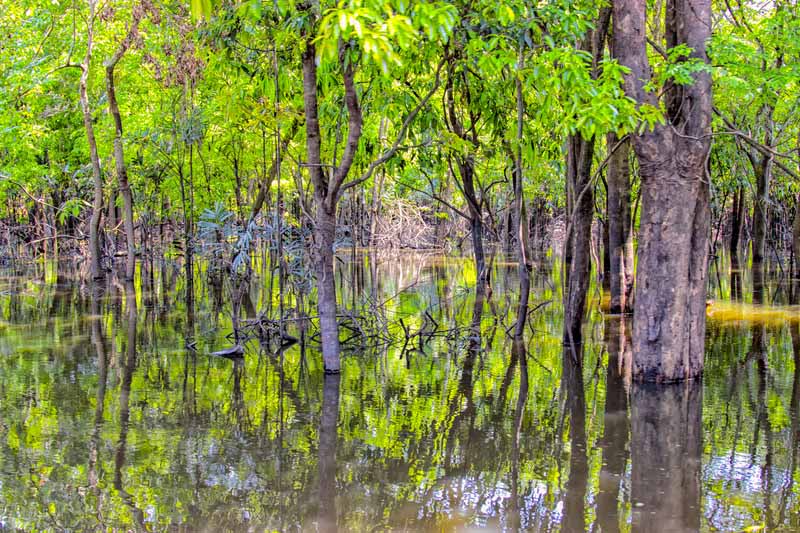
The rainy season in the Amazon transforms large swathes of forest into aquatic wonderlands. The varzea, flooded by whitewater rivers, becomes a bustling hub for fish that thrive among submerged trees—a true buffet for predators like caimans and pink dolphins. Meanwhile, the igapo, drenched by blackwater systems, presents an eerier landscape with dark waters reflecting the ghostly silhouettes of drowned canopies.
You’ll find these seasonal shifts aren’t just fascinating; they’re critical to maintaining biodiversity. They let species like the infamous piranha spawn during high water periods when food is plentiful before retreating as waters recede.
Terra Firme: The Unflooded Heartland
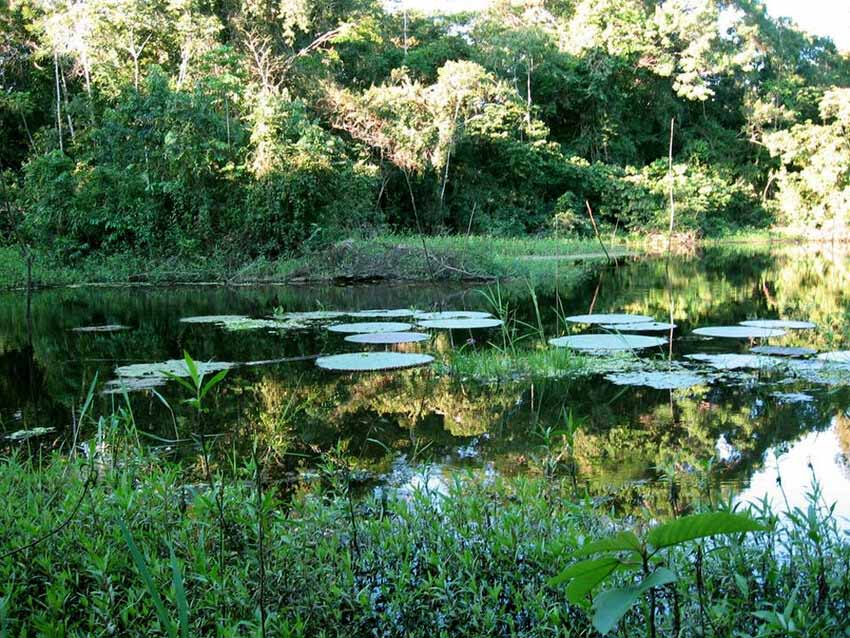
Beyond reach of annual floods lies terra firme—solid ground that houses towering hardwood giants and hosts symphonies orchestrated by howler monkeys each dawn. Here orchids cling to branches while jaguars prowl below—a testament to evolution’s creativity when left uninterrupted over millennia.
Vast Wetlands: More than Just Swamps
If you think wetlands are just soggy marshes, think again. Places like Brazil’s Pantanal are grand stages set for nature’s dramas where capybaras roam free amid endless fields dotted with termite mounds—and yes, those termites have their own role in this complex web.
Each environment within this lush matrix not only supports life but also underpins entire cultures relying on them—from indigenous tribes whose knowledge spans generations to modern scientists making breakthrough discoveries about our planet at places like Amazon Conservation research hubs.
The Lush Life Along the Amazon: Flora and Fauna
Imagine a realm where biodiversity reigns supreme, where every leafy branch and murky waterway teems with life.
Amazonian Wildlife: A Parade of Biodiversity
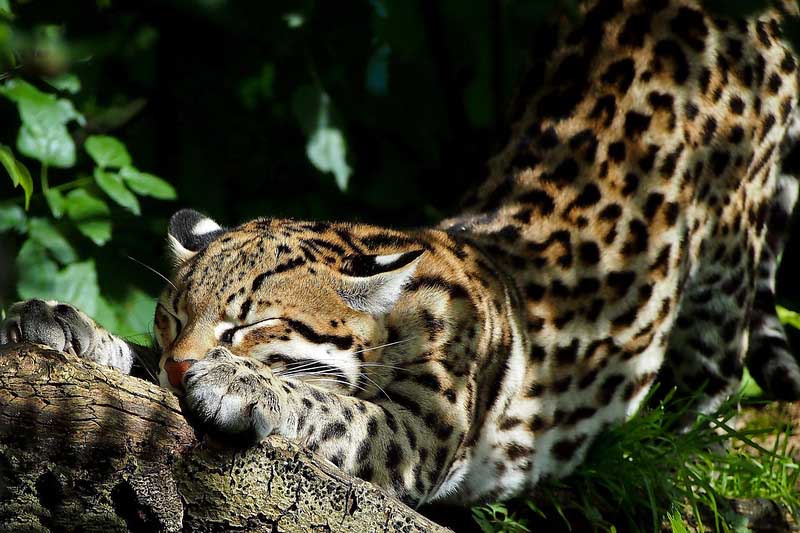
Squawking macaws paint the sky with vibrant hues while elusive jaguars prowl below, just a sample of the amazing birdlife in Amazonas. The Amazon Basin is home to one in ten known species on Earth, including both fearsome predators and curious critters like sloths who seem to have all the time in the world. Here, pink river dolphins break surface tension as they frolic—a sight so enchanting it feels plucked from mythology.
The cacophony of howler monkeys at dawn underscores this place’s raw vitality. They’re not just loud; their calls can be heard over three miles away, serving as nature’s alarm clock for those lucky enough to experience this wilderness firsthand. The waters of the river and it’s surrounding lakes are also home to the tame amazon manatee.
Botanical Bounty: Plants That Sustain and Amaze
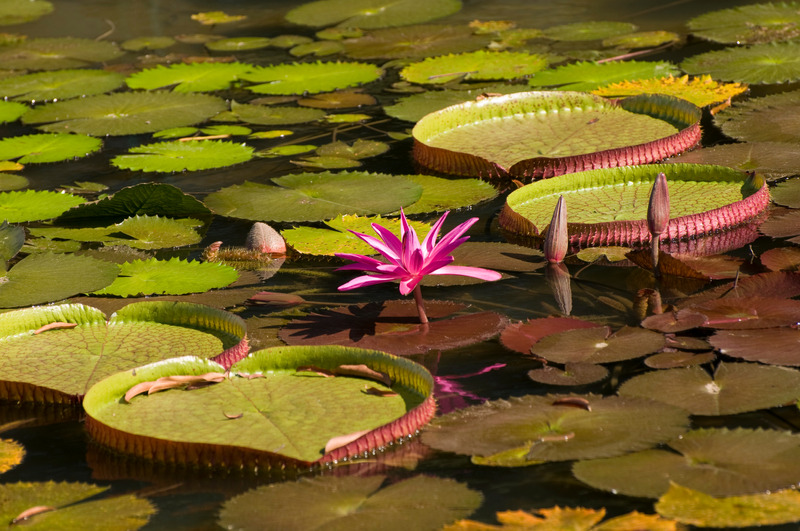
Beyond its animal inhabitants, plant life here doesn’t play second fiddle—take Victoria amazonica lily pads capable of supporting a small child’s weight or medicinal plants that local tribes have used for centuries. The rainforest canopy itself serves as an umbrella, shielding myriad forms beneath from intense sun rays or deluging rains.
This botanical treasure trove is more than meets the eye—it also plays guardian to our planet by storing vast amounts of carbon dioxide which helps keep global temperatures in check. Talk about flower power.
Symbiotic Relationships: Nature’s Intricate Web
Fascinating are also symbiotic relationships flourishing throughout this jungle—the fig trees relying on wasps for pollination being one example among countless others showing nature’s interconnectedness here is nothing short of magic woven into each interaction between flora and fauna alike.
Key Takeaway:
Dive into the Amazon’s heart, where squawking macaws and stealthy jaguars reveal a world brimming with life. It’s not just about wildlife; giant lily pads and healing plants show off the rainforest’s botanical might. Plus, this green maze is our planet’s ally against climate change.
Tributaries and Affluents Feeding the Mighty Amazon
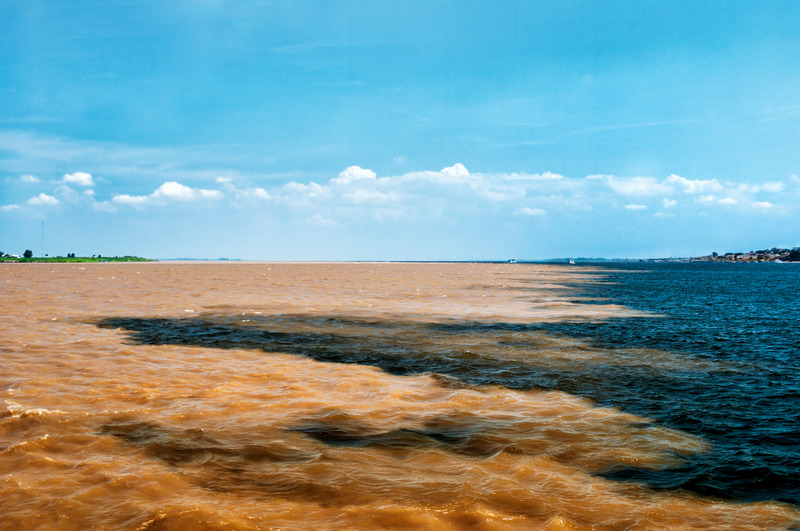
Picture the Amazon as a bustling water highway, with tributaries and affluents like countless roads feeding into an ever-moving metropolis. These are no mere streams; they’re vital arteries that keep the heart of South America’s ecosystem pumping.
The Marañón River is often touted as the principal source, winding down from Peruvian Andes. But let’s not forget its sibling rival for this title: The Ucayali River also makes a strong claim to fame. Together, they form a dynamic duo before joining forces with other heavyweights such as Madeira and Japurá rivers—each bringing their own unique blend of nutrients and life to this colossal basin.
It’s worth noting that when it comes to size, Madeira takes the cake by volume discharged. This titan among tributaries, running over 3,250 kilometers long (that’s about 2,020 miles), contributes around half of all sediments reaching the Atlantic from the Amazon.
We must also tip our hats to Rio Negro—the dark horse of this race—a river so rich in humic acid that it runs darker than your morning coffee. It creates a stark contrast against sandy-hued Solimões at their confluence near Manaus—an iconic sight known locally as ‘Encontro das Águas’ : the meeting of the waters.
In these vibrant veins flow stories untold; secrets whispered between caiman crocodiles or sung through bird calls under canopies lush beyond imagination. Every drop tells tales older than time itself—stories we’re only beginning to understand thanks to modern research shedding light on what lies beneath those murky depths.
Embarking on an Amazonian Adventure: River Cruising Essentials
If you’re itching for a travel experience that’s as rich in culture as it is in biodiversity, look no further than an Amazon River cruise. It’s not just about the destination but also how you get there. Imagine gliding along the world’s largest river, surrounded by a symphony of wildlife calls and the lush greenery of rainforests.
Main Routes to Navigate Your Imagination
The Amazon offers various routes that cater to every type of explorer. The most popular ones will take you from vibrant Iquitos in Peru through remote areas where pink dolphins play hide and seek with your expectations. Or perhaps let Manaus in Brazil be your starting point—where urban life meets wild nature at its finest.
Vital Ports That Anchor Your Journey
Your gateway into this watery wilderness comes via bustling ports like Santarém, where rivers meet and cultures blend seamlessly—a perfect snapshot of what awaits downstream. Every stopover introduces another layer to the intricate storybook that is South America.
Navigating Choices: Selecting Your Vessel Wisely
When it comes to choosing your vessel, think beyond size or luxury; think character. Will it be a traditional riverboat – like La Amatista – echoing stories of old explorers? Or maybe something sleeker— Aqua Nera – a modern cruiser fitted with panoramic windows designed for wildlife spotting? Either way, ensure comfort doesn’t sacrifice intimacy with nature because trust me; nothing beats waking up to toucans calling right outside your window.
So pack light but bring heaps of curiosity—it’s time to set sail on one epic tale. Remember though, this isn’t just any vacation; it’s an expedition into heartbeats and breaths taken away under canopies so vast they redefine infinity for all who walk below them.
Key Takeaway:
Ready for an epic Amazon River cruise? Think pink dolphins, vibrant cultures, and lush rainforests. Choose a boat with character to match the adventure—where comfort meets close encounters with nature.
Pack light and let curiosity lead as you navigate from Iquitos or Manaus through vital ports like Santarém. It’s more than travel; it’s an expedition into the infinite wonders of South America.
Highlights and Must-Sees on an Amazon River Trip
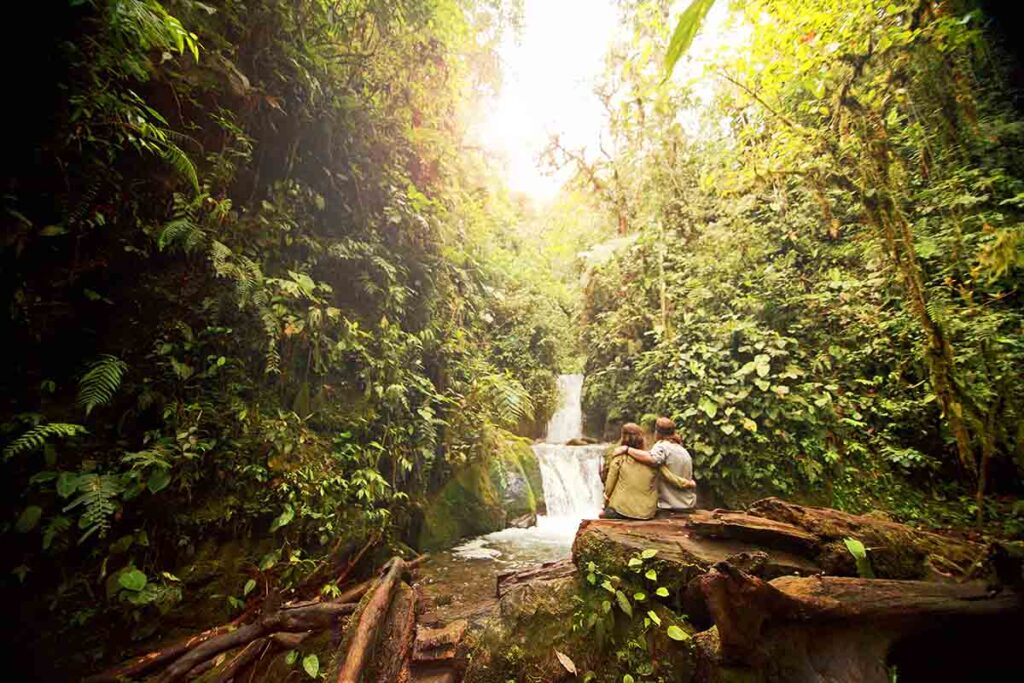
Picture yourself gliding through the heart of the rainforest, surrounded by a symphony of wildlife calls. That’s just your first taste of what awaits on an Amazon River adventure. Here’s a sneak peek at some experiences you can’t miss.
Vibrant Wildlife Encounters
The Amazon is like nature’s megastore for biodiversity. While cruising downriver, keep your eyes peeled for pink river dolphins surfacing alongside your boat or capybaras lounging on the banks. The treetops are alive with colorful macaws; their squawks fill the air as they streak across the sky—a natural spectacle better than any fireworks show.
Nighttime brings its own magic when nocturnal creatures emerge. With luck, you might spot caimans—their eyes glowing in torchlight—or hear howler monkeys declaring their presence under starlit skies.
Cultural Immersion with Indigenous Communities
Docking at remote villages gives you rare access to indigenous communities where ancient traditions thrive unscathed by modern chaos. Through these interactions, visitors gain profound insights into local ways of life—fishing techniques passed down generations or stories that weave through time like threads in vibrant handwoven textiles.
Taste exotic fruits straight from trees and learn about medicinal plants used for centuries—it’s hands-on learning that beats any textbook.
River Cruising: Choose Your Style
Your vessel choice sets the tone: opt for luxury cruises with gourmet cuisine and panoramic suites or go rugged aboard smaller boats offering intimate connections with nature—and fellow adventurers. Each turn along this serpentine waterway presents opportunities to fish for piranha (talk about a catch.), kayak in tranquil tributaries, or simply soak up views from hammock-laden decks.
Remember: no two trips are alike because Mother Nature loves spontaneity as much as we do.
Key Takeaway:
Embark on an Amazon River trip for a mix of wildlife encounters, cultural experiences, and cruising styles. Spot pink dolphins by day and caimans at night, immerse yourself in local traditions, and choose from luxury to rugged boats for your adventure.
Comparing Travel Styles in the Amazon Region
When it comes to exploring the Amazon, you’ve got two prime options: kicking back on a river cruise or bunkering down in a jungle lodge. Each has its charm and set of perks that cater to different traveler vibes.
River Cruises: Gliding Through Nature's Arteries
A river cruise offers an all-inclusive window into the heart of the rainforest without sacrificing comfort. Picture this: sipping local brews on deck while pink dolphins play tag in the waters below. National Geographic highlights how these voyages give you front-row seats to some of nature’s greatest shows – from macaws painting the sky with color to capybaras chilling on the banks.
Cruising means mobility; each day brings new scenery and opportunities for adventure like piranha fishing or canopy walking.
Lodge Stays: Immerse You A river cruise offers an all-inclusive window into the heart of the rainforest without sacrificing comfort. Picture this: sipping local brews on deck while pink dolphins play tag in the waters below. National Geographic highlights how these voyages give you front-row seats to some of nature’s greatest shows – from macaws painting the sky with color to capybaras chilling on the banks.
Cruising means mobility; each day brings new scenery and opportunities for adventure like piranha fishing or canopy walking. A river cruise offers an all-inclusive window into the heart of the rainforest without sacrificing comfort. Picture this: sipping local brews on deck while pink dolphins play tag in the waters below. National Geographic highlights how these voyages give you front-row seats to some of nature’s greatest shows – from macaws painting the sky with color to capybaras chilling on the banks.
Lodge Stays: Immerse Yourself Fully
If being grounded (literally) sounds more appealing, consider a lodge stay where nights are scored by symphonies of cicadas and mornings start with monkey calls. A lodge experience allows for deeper dives into local culture and ecosystems since you’re not just passing through — you’re living there, even if just for a few days.
You might miss out on covering as much ground as cruises offer but gaining intimate knowledge about one slice of paradise can be far more enriching than skimming many.
Making Your Choice
The real question is what floats your boat? For those looking for ease and elegance, river cruises have your name written across their bows. If getting up close with tarantulas before breakfast tickles your fancy then maybe opt for terra firma at a lodge instead.
So go ahead, choose your own adventure.
Key Takeaway:
Exploring the Amazon? Cruise for comfort and a broad brush of beauty, or lodge to dive deep into the jungle’s heart.
River cruises glide you through breathtaking scenes with ease. Lodges offer an intimate date with nature and culture on solid ground.
Pick what thrills you: luxury floating views or waking up in wildlife’s lap?
The Amazon's Global Impact
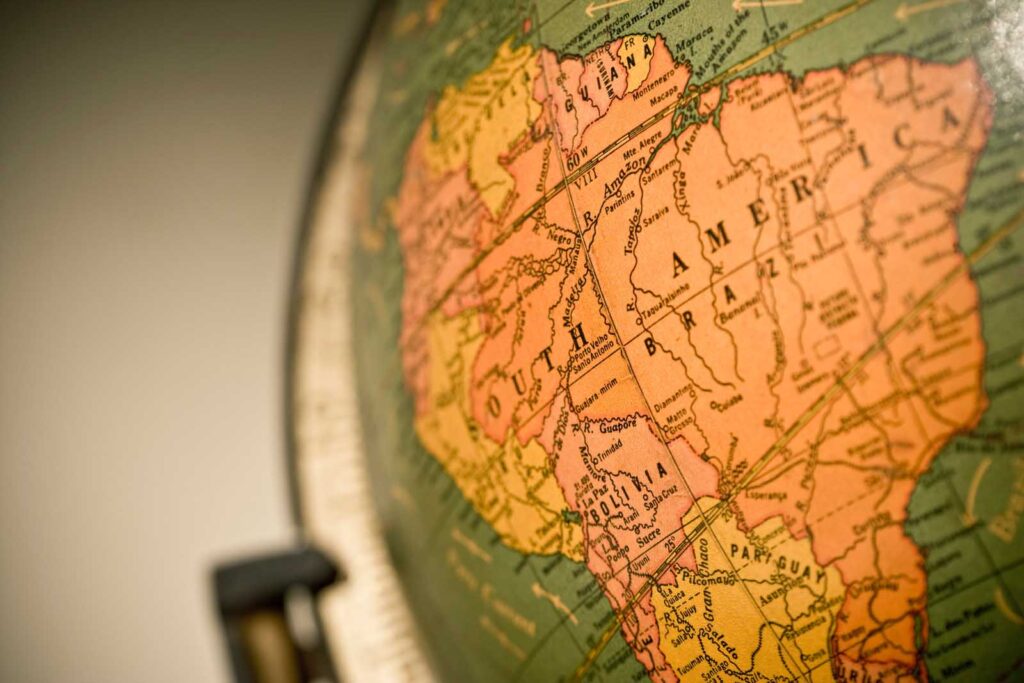
It plays a critical role in regulating our planet’s water cycle by releasing up to 20 billion tons of water into the atmosphere every day through evaporation and transpiration, contributing significantly to global rainfall patterns.
This mighty river also acts like a giant air purifier; its vast rainforest serves as one of the world’s largest carbon sinks, soaking up immense amounts of greenhouse gases. But here’s where it gets even cooler: studies show that this region could be absorbing more carbon than we thought—acting like an ecological superhero in combat against climate change.
Moreover, let me paint you a picture—but with numbers because they’re just as vivid. The Amazon Basin holds about one-fifth of all fresh flowing water on the planet. Yes, that means if Mother Nature had bank accounts for her rivers, the Amazon would be sitting pretty at number one on Forbes’ list.
River Health Equals Earth’s Wealth
Beyond its sheer volume though is what this freshwater juggernaut does for us land-dwellers. Farmers from far-flung places rely heavily on weather systems generated by the forest-river combo meal that is unique to South America—their crops literally live off ‘Amazonian weather’.
But wait—it gets juicier. If you fancy seafood or depend on ocean-based industries—you’ve got skin in this game too because when it empties into the Atlantic Ocean, nutrients from decomposed plant matter hitch along and are basically fast food for marine life near Brazil and beyond.
A Climate Conductor With A Global Baton
If we zoom out further—and I mean satellite view—we see how these massive transfers affect temperature regulation across our blue marble home—a sort-of thermostat keeping things chill (or warm) exactly where needed.
Key Takeaway:
The Amazon River is Earth’s powerhouse, acting as a mega-hydrator and air purifier. It helps regulate the water cycle, affects global rainfall, and battles climate change by absorbing greenhouse gases. This river feeds weather systems that support agriculture far away and nourishes marine life when it meets the ocean.
In summing up why Voyagers Travel Company treasures this magnificent natural resource? It simply can’t be overstated how critical preserving what lies beneath those murky waters really is—not only locally but globally as well considering impacts felt around our planet today (and tomorrow). So when you set sail on your next adventure here remember: You’re witnessing history unfold each day spent cruising legendary waterways where wonders await discovery at every bend downstream…
The Amazon isn’t just South America’s treasure; its global impact can’t be overstated. Its breath powers our climate; its veins support our water cycle.
If you are interested in visiting the Amazon rainforest basin, contact one of Voyagers Travel Advisors , they will help you plan a custom itinerary with pre and post visits to other South American travel highlights as well.
